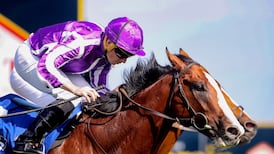Golf's Greatest Shots/Number 20: In his brief but memorable career, Bobby Jones - who performed the grand Slam in 1930 which, in those days, constituted winning the US Open and US Amateur and the British Open and British Amateur championships in the one year - did many great things.
Bobby Jones, 1926 British Open Royal Lytham & St Annes
And, yet, one of his greatest shots of all was produced in the British Open of 1926 which was played at Royal Lytham & St Annes. This was the year that Jones got to the fifth round of the British Amateur, finished second in the US Amateur and won both the US Open and the British Open. But that win in the British Open seemed to be out of his grasp, especially when he put his drive on the 71st hole - the penultimate hole - into a fairway bunker.
Jones had been paired with Al Watrous, a young American golfer who had that most unwanted tag of being considered the greatest golfer never to win a major championship. It is still around today, as Messrs Mickelson and Garcia among others will testify. Back then, however, it looked as Watrous - playing with Jones for the final 36-holes - was ready to shed that affliction.
In the morning, Watrous shot a 69 and came from two strokes behind Jones to two ahead going into the final round.
Through most of that last round, Watrous held his nerve and led, only to tighten coming down the stretch with the Claret Jug in his sights until he three-putted the 14th and 15th holes to allow Jones to draw level.
However, on the 17th, it was Jones who appeared to have cracked. In those days, the 17th was a 411-yard par four and Jones's tee-shot had too much draw and came to rest in an area of unraked sand just at the corner of the dogleg.
Watrous, in contrast, drove safely down the right side of the fairway and then knocked a long-iron on to the front of the green. Jones looked to have an impossible shot if he was to find the green, which he needed to do if he was to keep alive his hopes of winning the championship.
In his book, Down The Fairway, he described the predicament: "The only way I could get a look at the green, and what lay between it and my ball, was to walk far out to the right, nearly across the fairway. I did this.
"The prospect was not exactly encouraging. I had to hit a shot with a carry of close to 175 yards, and hit it on a good line, and stop the ball very promptly when it reached the green - if it reached the green.
This, off dry sand, though the ball luckily lay clean, was a stiff assignment. You know, an eighth of an inch too deep with your blade off dry sand and the shot expires right in front of your eyes. And if your blade is a thought too high . . . I will dismiss this harrowing reflection."
Jones decided on a four-iron and caught it cleanly from the sand. It shot into the wind and up over the dunes and over the greenside bunker to settle well within the approach shot of Watrous. Unnerved, Watrous three-putted and Jones got his par. The day had been decided by a stroke of genius, and the world's greatest player of his time had performed it.
At the end of the series, readers will be able to vote for their Five Greatest Golf Shots Ever - the reader whose selection corresponds with the shots selected by an 'Irish Times' panel will enter a draw to win a custom-fit Titleist 975J Driver.











